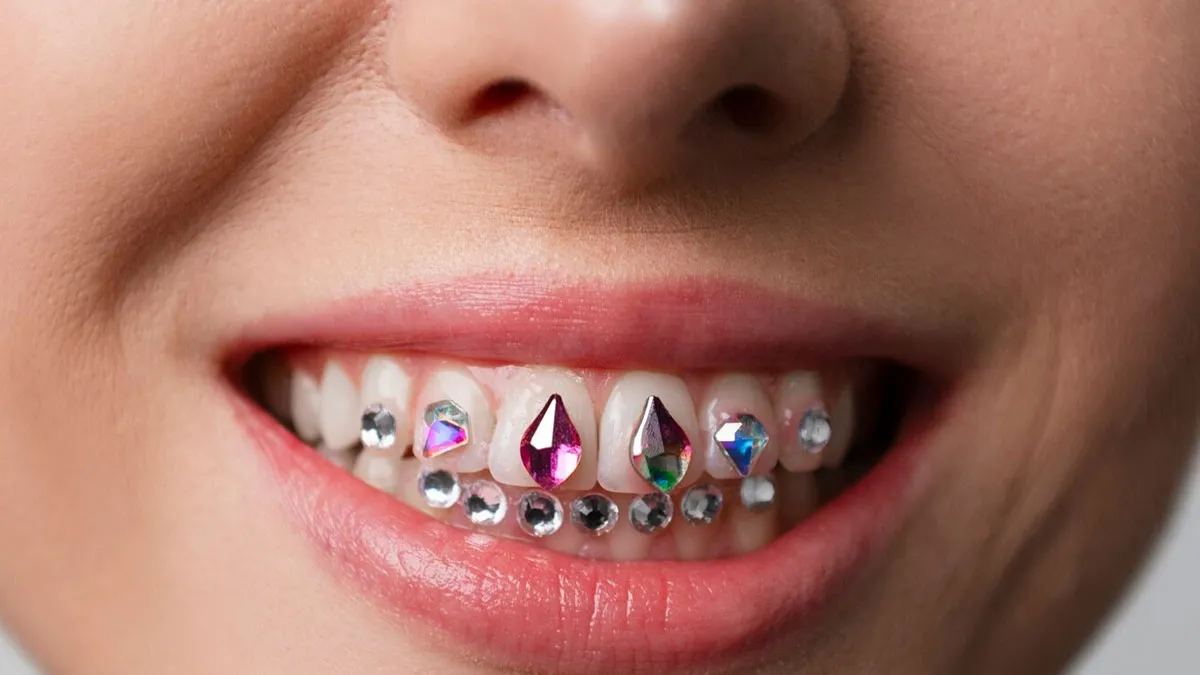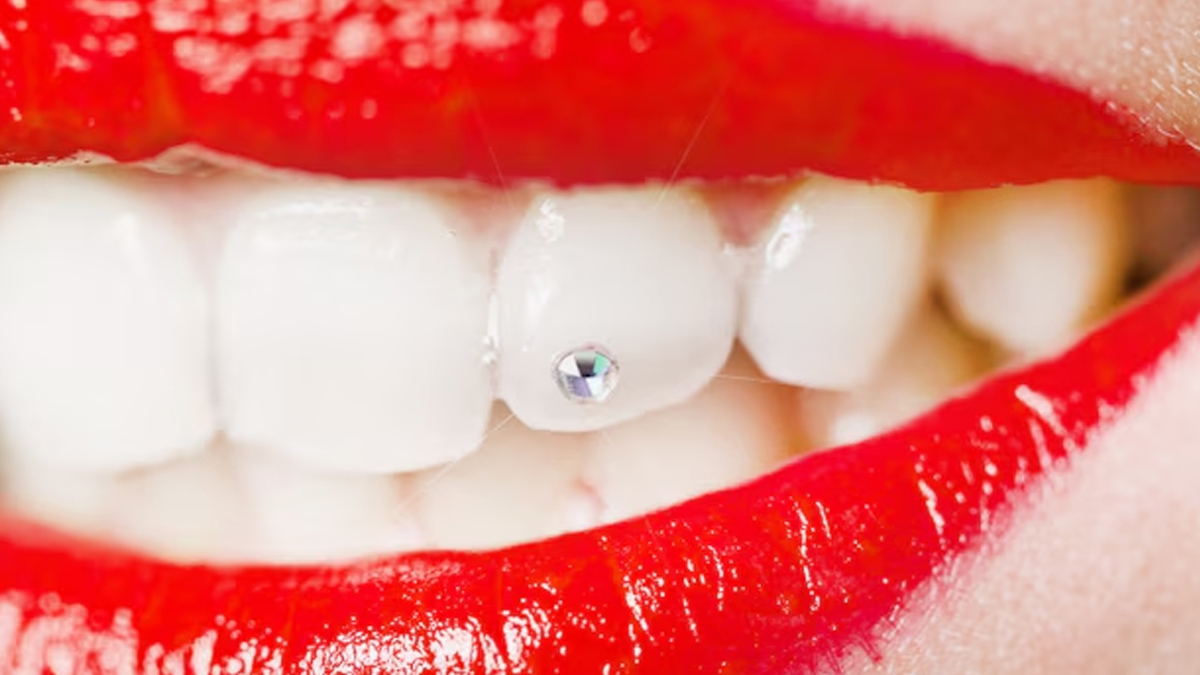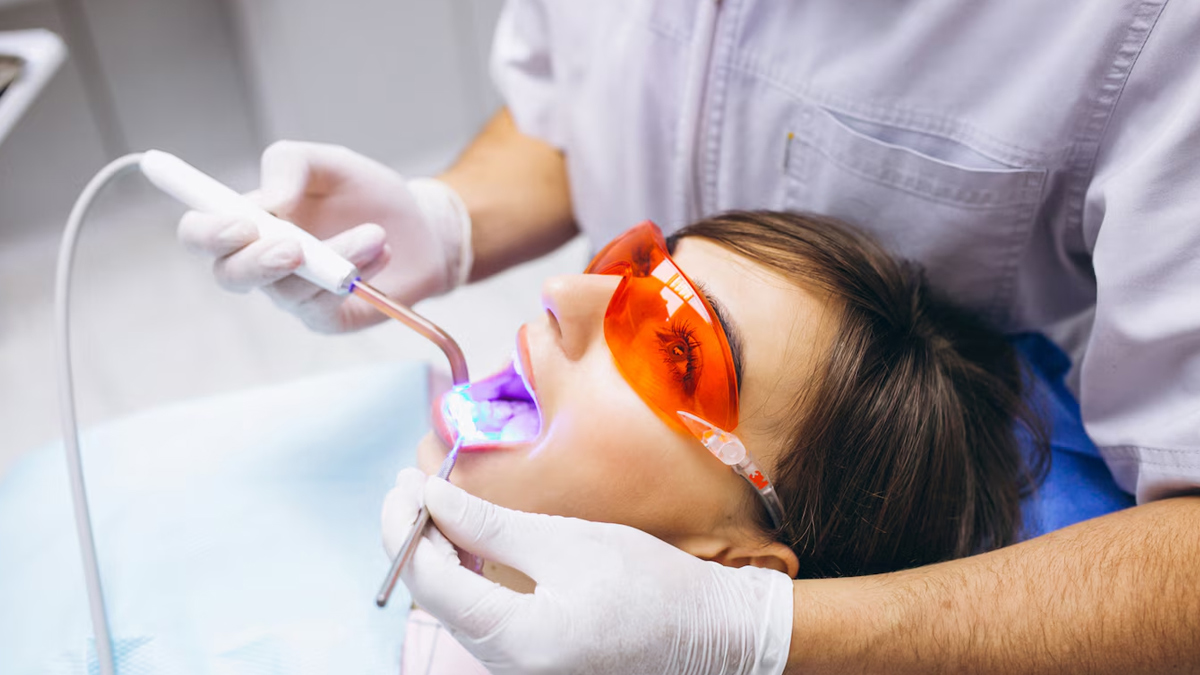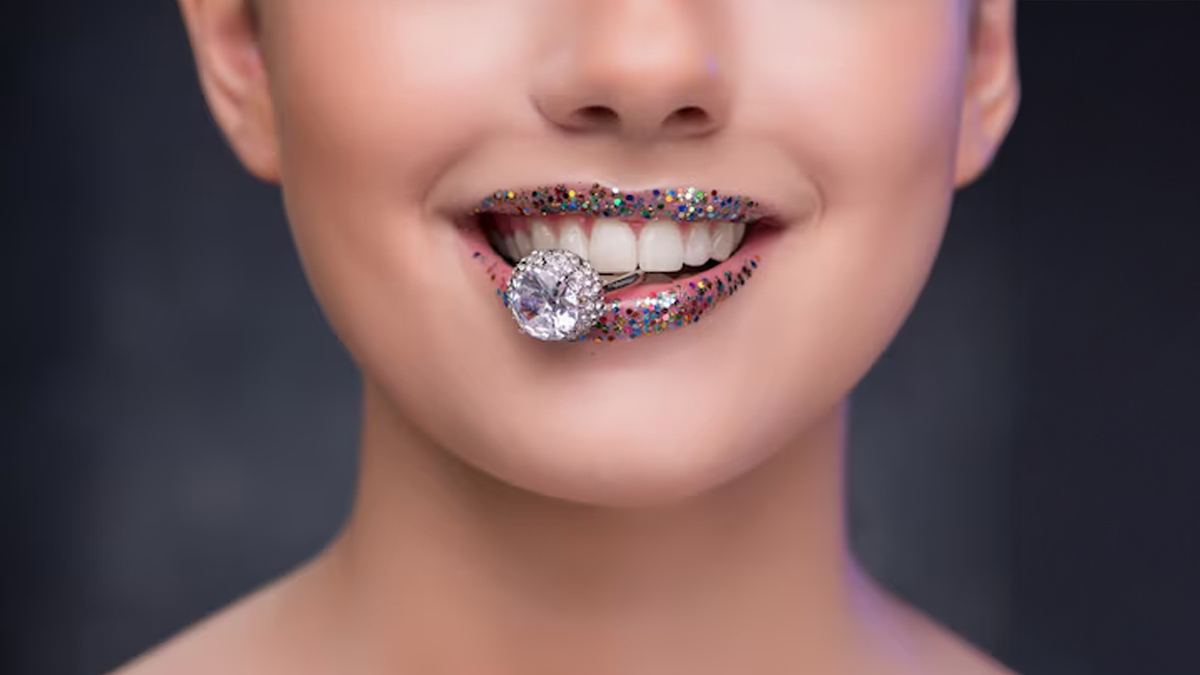
Tooth gems are tiny, sparkly decorations for your teeth. More and more young people are getting them, and we can't stop wondering whether this aesthetic choice is safe in the first place. Moreover, do they come with long-term oral health problems? In an interaction with the OnlyMyHealth team, Dr Manvi Srivastava, Dentist at NIIMS Medical College & Hospital, Noida, answers all the important questions about the safety, application, and care of tooth gems.
Table of Content:-
How Are Tooth Gems Applied?

The application of tooth gems is a quick, painless, and minimally invasive procedure that typically takes about 20–30 minutes. It involves the following steps:
Cleaning: The tooth is thoroughly cleaned to remove any plaque or debris, ensuring a clean surface for the adhesive.
Preparation: A dental-grade resin adhesive is applied to the selected area of the tooth.
Placement: The gem (often made of crystal, gold, or similar materials) is carefully positioned on the tooth.
Curing: An ultraviolet (UV) light is used to harden the adhesive, bonding the gem in place.
Importantly, this procedure does not require drilling or altering the natural tooth structure, which makes it relatively safe when performed by a professional.
Also Read: Bad Breath or Bleeding Gums? Your Gut Might Be the Reason
Can Tooth Gems Damage Your Teeth?

"When applied correctly, tooth gems do not damage the tooth itself," says Dr Srivastava. However, there are some inherent dangers if the gem is applied incorrectly or if the gem is not taken care of. These include:
Adhesive problems: The adhesive may not be placed properly, or a low-grade adhesive may be used. Regardless, the adhesive may cause problems when the gem comes off. There is also a chance the gem comes off unexpectedly and damages either the enamel or the gum.
Pressure or trauma: If the gem has excess protrusion or if the gem is extremely large, it could definitely apply pressure on the tooth and gum and therefore cause issues or potentially trauma.
Enamel erosion: There is a small risk of enamel loss during the removal of the gem if the gem adhesive is poorly removed.
Do Tooth Gems Affect Oral Hygiene?
Tooth gems can pose challenges for maintaining proper oral hygiene, especially if they are not cleaned thoroughly:
Plaque buildup: Food particles can collect around the gem, making it a hotspot for plaque accumulation that’s hard to clean with regular brushing.
Flossing difficulties: Flossing around a gem can be tricky and may cause people to avoid it altogether, increasing the risk of cavities or gum disease.
Gingivitis risk: If plaque builds up around the gum, gum irritation or gingivitis may follow.
Maintaining diligent oral hygiene and continuing regular dental checkups are essential when you have a tooth gem.
Are There Long-Term Risks Of Getting Tooth Gems?

While the long-term risks are generally low when tooth gems are applied and maintained correctly, some concerns include:
Tooth decay: If the adhesive or the base of the gem traps food particles or plaque against the tooth, it could lead to an increased risk of cavities over time.
Damage during removal: Over time, if the gem is not removed properly or the adhesive starts to deteriorate, it could cause damage to the enamel.
Aesthetic wear: The gem or adhesive may deteriorate over time due to constant exposure to the abrasive nature of saliva, food, or beverages, leading to a less aesthetically pleasing appearance.
Dental sensitivity: If the gem is not properly bonded, there could be an increased risk of tooth sensitivity at the site of application.
Also Read: Do Toothpaste Tablets Really Work? Experts Weigh In on Their Oral Health Benefits
Could Some People Be Allergic To Tooth Gems?
Though uncommon, according to Dr Srivastava, allergic reactions can occur due to either the adhesive or the material of the gem:
Adhesive reactions: Some people may experience irritation, swelling, or itching due to certain chemicals in the adhesive.
Material allergies: Metals like gold or silver could trigger allergic reactions in sensitive individuals, but gems made from crystal or diamond are usually safe.
How Are Tooth Gems Removed?
Dr Srivastava advises that tooth gems should always be removed by a dental professional, who uses specialised tools to gently remove the gem and adhesive without damaging the tooth.
The tooth is typically polished to restore smoothness and appearance.
Conclusion
Tooth gems can be a fashionable way to express yourself, as long as they’re done correctly. The key is choosing a dental professional for both application and removal, maintaining excellent oral hygiene, and being aware of any potential allergic reactions. When handled properly, tooth gems are generally safe and can add sparkle to your smile without compromising your dental health.
Also watch this video
Read Next
Think It's Lactose? You Might Actually Be Intolerant To Fat In The Milk; How To Know For Sure
How we keep this article up to date:
We work with experts and keep a close eye on the latest in health and wellness. Whenever there is a new research or helpful information, we update our articles with accurate and useful advice.
Current Version